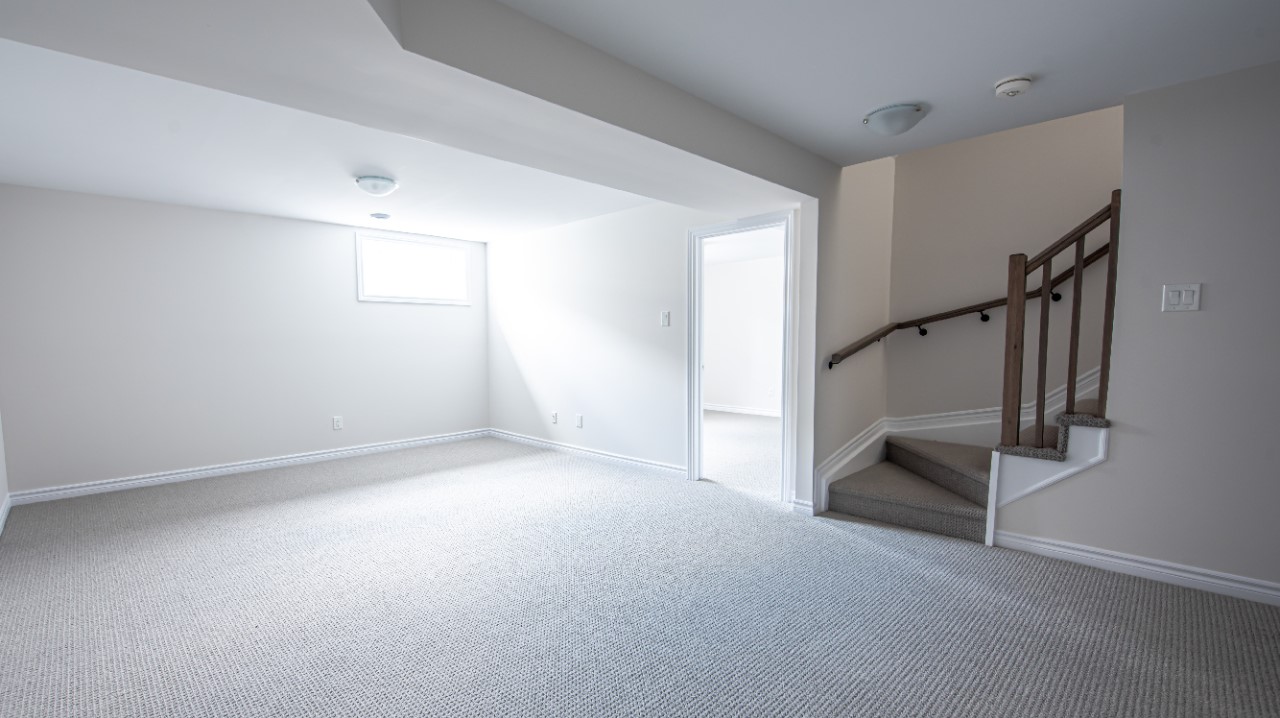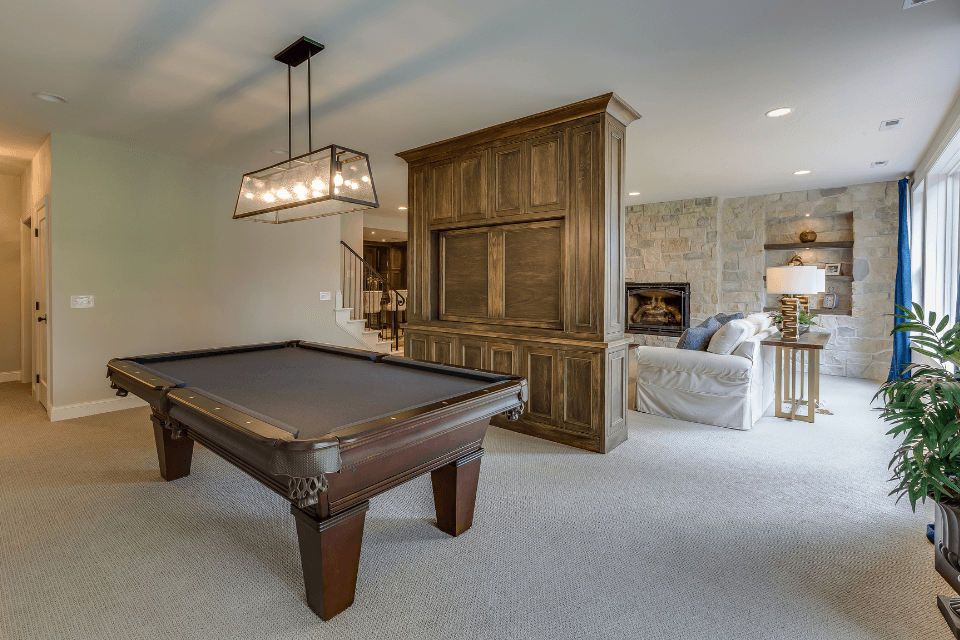It was the first Monday after the house purchase when Jane descended into her newly renovated basement in Ohio, eager to test out the cozy home theatre she’d planned. Instead of the expected excitement, she caught the faint smell of damp carpet and noticed warping on the wall near the floor—her dream space already turning into a nightmare. Without even unpacking the popcorn, she was confronted with one of the most common issues in U.S. home improvement: basement remodeling mistakes gone wrong.
If you’re planning a basement remodel somewhere in the USA, you’ll want to steer clear of the same pitfalls. Whether you’re converting storage into a guest suite, finishing the basement to add living space, or simply upgrading a run‑down lower level, the stakes are high. A misstep can cost you thousands of dollars, undermine your comfort, and reduce home value. This article will walk you through the 10 most critical mistakes—from avoiding “basement finishing mistakes to avoid” to the moisture missteps that plague so many remodels.
Who This Article Is For
If you’re a homeowner in the USA thinking about finishing your basement, this article is tailored for you.
- Maybe you’re a family of four in a suburban home looking to gain a playroom or movie room.
- Perhaps you’re a homeowner working full‑time and wanting to turn that dark, unused basement into a rental suite or home office.
- Or possibly you own an older home with a partially finished basement, and you’re worried about hidden costs and hidden water damage.
You’ll hear examples that match your situation, practical guidance that fits everyday budgets, and real‑life scenarios that reflect how your basement space can go right — or very, very wrong.
Read More: DIY Basement Remodeling Guide for Beginners | USA Tips
1. Skipping Proper Planning and Layout Design
One of the first and biggest mistakes in a basement remodel is diving in without a clear plan. A basement isn’t the same as an above‑ground room; the unique environment, layout constraints, mechanical systems, and potential moisture issues require dedicated design.
Why it matters
- Without a proper plan, you may end up with awkward layouts, wasted space, or a finished basement that doesn’t function.
- You might design a “cool man cave” but forget access to your furnace or obstruct mechanicals—then pay later to fix it.
- Lack of planning leads to cost overruns. In fact, one review showed that basement finishing has one of the lowest cost‑recovery rates among remodeling projects in the U.S. (about 22.7% of cost is recouped)
How to avoid it
- Bring in a designer or use planning software to draft your basement’s layout and purpose.
- Identify the zones: media room, guest suite, gym, storage, etc. Then design traffic flow and access accordingly.
- Make space for mechanicals and storage—you’ll regret if you remove it all and later have no place for water heater access.
- Set a realistic budget with a 15‑20% contingency for surprises.
Read More: True Cost of Basement Finishing Per Square Foot in the US
2. Ignoring Moisture and Waterproofing — The Most Costly Basement Remodeling Mistake
If there’s one mistake that homeowners regret the most, it’s failing to address moisture and waterproofing before finishing. Basements are below grade, which means they face special risks: leaking, dampness, condensation, and poor drainage.

Why it matters
- According to surveys, more than 60% of U.S. homes have a wet basement at least once.
- Mold, mildew, and structural issues stem from dampness. Ignoring them can erase your investment in walls, flooring, and finishes.
- Home inspectors and remodelers repeatedly cite “no waterproofing or drainage plan” as a top reason basement remodels fail.
How to avoid it
- Before installing walls or flooring, conduct a moisture assessment (look for efflorescence, seepage, and humidity).
- Install or upgrade drainage (e.g., French drains, sump pumps), external downspout extensions, and internal vapor barriers.
- Use moisture‑resistant materials—cement board instead of standard drywall, vinyl or tile rather than hardwood flooring.
- Dehumidify the space during and after finishing; consider a separate thermostat or HVAC zone.
Read More: Top Basement Remodeling Near Me | Trusted Contractors
3. Choosing the Wrong Materials for Basement Conditions
Basement environments differ significantly from above‑ground rooms: they’re colder, may have higher humidity, and often have limited natural light. Using the wrong materials sets you up for warping, mold growth, buckled floors, and general dissatisfaction.
Why it matters
- Wood floors, standard drywall, or wood studs in a damp basement often lead to problems.
- Using drywall designed for dry rooms may trap moisture behind walls, leading to hidden mold issues.
How to avoid it
- Opt for materials rated for below‑grade use: cement board or mold‑resistant gypsum for walls; luxury vinyl plank (LVP) or tile rather than solid hardwood for flooring.
- Use insulation and vapour barriers appropriately—rigid foam or spray foam rather than basic fiberglass batts.
- Ensure ventilation and air circulation are sufficient so materials dry properly and mold doesn’t take hold.
Read More: Maximize Basement Remodel ROI How U.S. Homeowners Can Increase Home Value
4. Neglecting Insulation, Air Sealing, and Energy Efficiency
Many homeowners finish their basement space, but overlook how cold and inefficient the space will be because of inadequate insulation or air sealing. The result? A damp, chilly shortcut that never truly feels like part of the home.
Why it matters
- Poor insulation results in higher heating/cooling bills and an uncomfortable space.
- Basements often have rim‑joists and joints that leak conditioned air; if you don’t seal and insulate properly, you’ve wasted effort.
How to avoid it
- Use closed‑cell spray foam or high‑performance rigid foam boards for basement walls and rim‑joists.
- Seal all penetrations: plumbing, wiring, ducts, etc.
- Consider upgrading HVAC or adding a zone thermostat so the basement is comfortable year‑round and doesn’t drag on your energy bill.
Read More: Average Cost to Finish a Basement Your 2026 USA Pricing Guide
5. Overlooking Proper Lighting, Egress, and Ceiling Height
An inviting basement feels like part of your home, not a dim, unfinished cave. Mistakes in lighting design and window/egress planning can cripple your basement’s usability and resale value.
Why it matters
- Basements tend to lack natural light; relying solely on standard lighting makes the space feel gloomy.
- If you plan a bedroom or guest suite, building codes often require egress windows. Ignoring that can cost you later.
- Low ceiling height or beams/ducts obstructing can make the basement feel cramped and noncompliant.
How to avoid it
- Strategically plan ambient, task, and accent lighting. Avoid one central fixture and dark corners.
- If creating a living space (bedroom, office), ensure you meet local code for egress windows or doors.
- Raise ceiling height where possible. Consider re‑routing ducts or using drop ceilings that still provide headroom and access.
- Use light paint colours and reflective surfaces to brighten up the room.
Read More: Basement Remodeling Cost 2026: The Ultimate Guide to Finishing Your Basement
6. Blocking Access to Mechanical Systems or Ignoring Storage Needs
Many basement remodels try to hide everything behind a finished wall—but when you block access to your water heater, furnace, main shut‑off, or storage space, you’re creating future headaches.
Why it matters
- If your basement’s finished walls block the furnace or panel, any service work becomes difficult and expensive.
- Ignoring storage means you simply push the clutter somewhere else—often into the finished space, making it feel messy.
How to avoid it
- Map your mechanical systems before designing and finishing work. Leave access panels or removable wall sections.
- Allocate a section of your basement for dedicated storage (shelving, under‑stairs cubbies) so that your living space doesn’t get cluttered.
- Don’t lose sight of function in favour of aesthetics—storage matters.
Read More: Basement Office Ideas – 11 Stylish Work From Home Spaces
7. Skipping Permits, Inspections, and Building Code Compliance
It may seem tempting to bypass the paperwork and go “DIY,” but failing to secure permits or adhere to code can create financial and legal headaches—especially when you try to sell your home.
Why it matters
- Unpermitted work can lead to fines, forced removal of the remodel, and insurance claim knock‑outs when something fails.
- Buyers are wary of basements without proper egress, ceiling height, fire separation, and safe electric/plumbing work.
- A contractor who avoids permits may also cut corners in other critical areas.
How to avoid it
- Check your local city or county building department just as early as you check materials and contractors.
- Use licensed professionals for electrical, plumbing, or structural changes.
- Keep documentation of all permits, inspections, and approvals—it adds to your home’s value and peace of mind.
Read More: Full Basement Ideas & Floor Plans: The Complete Guide to Smart, Stylish Layouts
8. Rushing the Job or Trying to DIY Everything
Finishing a basement is tempting as a DIY project—but especially with underground spaces, things like structural issues, moisture management, insulation, and HVAC zones often require professional expertise. Many homeowners find they “bit off more than they could chew.”
Why it matters
- A DIY mistake in wiring, plumbing, or drainage can cost far more to fix than hiring a proper pro in the first place.
- Rushing leads to mis‑measured materials, skipped prep steps, or poor workmanship—liable to failure in wet/damp conditions.
How to avoid it
- Decide what you can do and what you should subcontract (for example: you can paint and choose finishes, but let a pro handle waterproofing, structural changes, and electrical).
- Set realistic timelines—underground spaces often throw surprises (foundation cracks, old wiring, moisture entry) that extend the job.
- Get multiple bids and check references. Avoid the cheapest contractor if they show warning signs (no permit willingness, huge down payment)
Read More: Finishing a Basement: The Complete Guide to Transforming Your Lower Level
9. Forgetting Future Use or Resale Value
While you may be designing the basement for your current lifestyle, you should also consider future resale value and long‑term use. Choosing overly personal finishes or ignoring standard features can limit your home’s market appeal.
Why it matters
- A niche theme (e.g., full nightclub decor) might be fun now, but may turn off future buyers.
- According to remodeling data, finishing a basement has one of the lowest cost‑recovery rates (only about 22.7% recovered) in the USA.
- Features like egress, headroom, lighting, and waterproofing add to value; skipping them means lost market potential.
How to avoid it
- Choose flexible layouts that can adapt (media room now, guest suite later).
- Use neutral finishes with quality, so your investment stands out positively to future buyers.
- Make sure you maintain documentation, permits, and quality workmanship—these raise confidence for resale.
Read More: Looking to refresh your home? Discover the best house painting services in Dubai today!
10. Poor Lighting of Costs and Budget Under‑Estimation
Finally, one of the silent killers of basement remodeling is underestimating the budget. Many homeowners begin with a fun finish in mind, but once moisture fixes, insulation, mechanical upgrades, drywall, and flooring are added, costs escalate.

Why it matters
- Hidden issues crop up: foundation cracks, leaks, old wiring, drainage failures—all add cost.
- Cutting corners late in the process leads to lower-quality finishes and later repairs.
- Over‑optimistic budgets without contingency create stress and delays.
How to avoid it
- Include a contingency of at least 15‑20% of your budget for surprises.
- Ask for detailed line‑item quotes: waterproofing, insulation, drywall, mechanicals, ceilings, flooring, lighting.
- Resist the temptation to treat the basement as an afterthought—recognize it’s a complex project and budget accordingly.
Read More: Looking to refresh your home? Discover trusted and affordable painting services in Dubai today!
FAQs – Quick Answers to Common Basement Finishing Questions
Q1: Do I have to waterproof my basement before finishing?
A1: Yes. Moisture is arguably the biggest risk in basement finishing. Ignoring it means you risk mold growth, material failure, and wasted investment.
Q2: What is the minimum ceiling height for a finished basement in the USA?
A2: It varies by jurisdiction, but typically around 7 feet. Many sources warn about head‑height issues being a major mistake.
Q3: Can I install hardwood flooring in my basement?
A3: It’s risky. Traditional hardwood can warp or buckle in humid basement conditions. Use moisture‑resistant options like luxury vinyl plank (LVP), tile, or engineered wood.
Q4: Do I need a permit to finish my basement?
A4: Very likely yes, especially if you are changing structural elements, plumbing, or adding bedrooms/bathrooms. Skipping this is a significant mistake.
Q5: Will finishing my basement add value to my home?
A5: It can—yes—but remember the return on investment (ROI) for basement finishing is among the lowest of major remodels (≈ 22.7% cost recovery) in recent data.
That means you still need to do it right to maximise value.
Read More: Need fast and affordable AC repair service in Dubai? Click here to book trusted experts now!
Conclusion
Finishing your basement can transform wasted space into an inviting, functional extension of your home. But—as Jane’s story at the start reminds us—without careful planning, moisture control, correct materials, and code compliance, the project might cost you more than you bargained for. From skipping waterproofing and using the wrong materials, to under‑budgeting and ignoring permits, the list of basement finishing mistakes to avoid is long—but each one offers a clear path to steer around.
Here are the key takeaways:
- Begin with a robust plan and a realistic budget.
- Prioritise moisture control and waterproofing.
- Use materials designed for below‑grade conditions.
- Insulate and seal thoroughly for comfort and efficiency.
- Design lighting and egress for comfort and compliance.
- Allow mechanical access and never forget storage.
- Don’t skip permits and code inspections.
- Hire professionals for complex systems and avoid DIY risks.
- Think ahead to future use and resale value.
- Budget with a generous contingency for surprises.
If you’re ready to take your basement remodel seriously, start by consulting a qualified designer or contractor—and schedule a full basement inspection. That first step could save you thousands and give you a basement you’ll use happily for years.
Call to Action:
If you found this article helpful, share it with friends who are thinking about finishing their basement. Comment below with your biggest basement remodel worry or experience, and I’ll help you sort through it. What will your basement become in the next 5 years? A home office, gym, theatre — or something else entirely?
🏗️ Basement Project Calculator
Latest Post
-
Basement Ceiling Ideas Hide Ductwork Smartly
Opening Hook Imagine walking into your basement in Boise, Idaho—where the ceiling is so low that you brush your head on the joists—and noticing a sleek, well-designed backdrop above you instead of exposed ductwork and pipes. That difference, thanks to smart basement ceiling ideas, transforms a cramped, unfinished area into a welcoming space for movie…
-
أفكار رائعة لأرضيات رخيصة في دبي | أفضل ٢٠ خيارًا
تخيل زوجين شابين في شقة مريحة في مرسى دبي، يخطوان حافيي القدمين على أرضية أنيقة بلمسة خشبية. غرفة المعيشة تتلألأ بضوء مسائي خافت، والأرضية تحتها لا تزال تبدو جديدة تمامًا رغم سنوات من الاستخدام – وكل هذا بميزانية محدودة. هذه هي قوة اختيار أرضيات جميلة ورخيصة في دبي: الأناقة والتوفير في آن واحد. التركيز على…
-
Beautiful Cheap Flooring Ideas in Dubai | Top 20 Picks
Imagine a young couple in a cosy apartment in Dubai Marina, stepping barefoot onto a sleek, wood-look floor. The living room glows with soft evening light, the flooring beneath still looks brand-new despite years of use—and all this on a budget. That’s the power of choosing beautiful, cheap flooring in Dubai: style and savings in…



